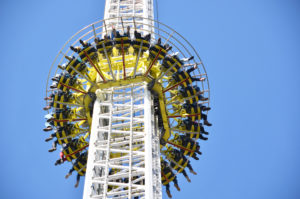ike many Americans, I watched with great interest, and with increasing anger, the recent beating of a 64-year-old retired schoolteacher on the streets of New Orleans. The glare of the public eye almost wasn’t there. A New Orleans police horse appeared to be made to walk backward, apparently to block the probing eye of the TV camera.
Unlike many Americans, as a former police chief and current manager of a police academy, I have learned that the facts of alleged police misconduct are many times at odds with the information that comes out publicly. Time after time, I would investigate complaints against officers, only to find the issue to be clouded in misunderstanding or sometimes even blatant lies against an officer making a lawful and professional arrest.
However, even in the eyes of law-enforcement professionals across the nation, who tend to hold back criticism of fellow officers until the very last shred of damning evidence is in, the New Orleans situation was very disturbing. Every officer and police instructor I spoke with in different regions of the country had a similar reaction: disgust.
As the picture speaks a thousand words for itself, so, too, does the obvious crossing of the line with Robert Davis. And while there exists a sliver (and I mean a tiny sliver) that there could be some truth in the position of the arresting officers, an even more unsettling development out of the same situation was the New Orleans police officer who threatened and used profanity with an AP television producer while physically pushing him back against a car.
The blatant and open hostility vented by the officer revealed a brand of law enforcement that could not support a bona fide arrest of that producer and could offer no credible explanation for the verbal barrage of expletives and obvious physical battery. Even if the producer was subject to a legitimate arrest, the officer’s behavior was not acceptable.
When I took the oath of a law enforcer years ago, I told myself that the true measure of what separated me from the bullies and predators in our society was not my badge. Rather it was the inner strength I possessed to curb my impulses and shape my behavior so that “I” did not become “them.” The badge was but the symbol. The true manifestation of policing was within me.
And the true essence of being an honorable law enforcer is in most police officers, deputy sheriffs, and state troopers. New Orleans is a situation that stretches the thread that binds the police fabric together. It pulls at the material and frays the edges, making it easy for an officer to fall victim to his impulses to loot sunglasses or take TVs.
The hidden strength in the blue fabric should be the presence of other interwoven blue threads that lend support for those rare moments of personal weakness. It behooves the rest of us in this noble profession to see the signs of tired and stressed threads and give them support.
When the officer pushed the media producer against the car, I observed several other officers that stood by and watched. Those officers should have been the “cross thread” that gave strength to the situation and intervened. Better yet, maybe they could have foreseen the buildup and moved their colleague down the street to cool off.
The image of New Orleans police as bullies and intimidators on national television does not help the cause of an agency that has strived for some 10 years to break its negative reputation. That impetus to clean up the department’s image began with the arrival of former police Superintendent Richard Pennington (now the police chief in Atlanta) and has come full circle with the recent events.
Nor, for that matter, does it help the image of police professionals elsewhere. While all would acknowledge that the stress on the New Orleans officers during this post-hurricane period has been inordinate, the oath has no clause that makes for allowances of police abuse and brutality.
My 4-year-old son interacts with police officers regularly, pretends that he is one, and wants to be one some day. I am ashamed to say that I had to have him leave the room when the images of those officers breaking their oath came on the television again and again. My little, wide-eyed boy did not yet need to see what happens when the blue fabric that holds the law-enforcement profession together is ripped.

The Legal Examiner and our Affiliate Network strive to be the place you look to for news, context, and more, wherever your life intersects with the law.










Comments for this article are closed.